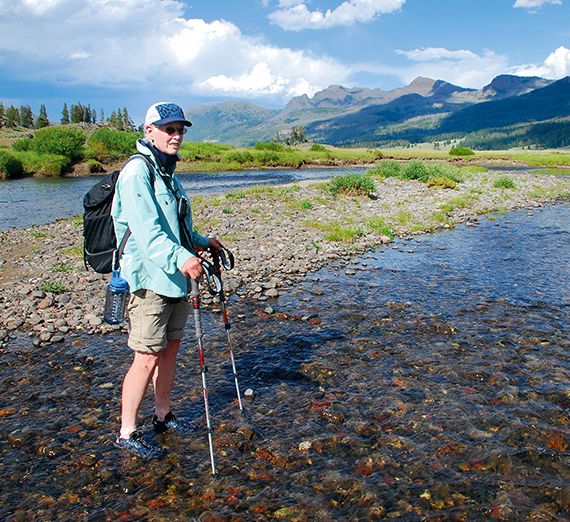Pioneer Woman: Betsy Downey

ADVOCATE, ACTIVIST, AUTHOR
(Republished from Gonzaga Magazine 2015)
After nearly a half century of teaching history at GU, Betsy Downey has retired from full-time coursework and received a new title: Professor Emerita. Gonzaga Magazine learns more about the passions that still fuel her research.
What fed your love of history?
It came from many sources: an addiction to reading; events of the period in which I grew up, especially the Cold War and women’s and civil rights; and the accessibility of historic places in the U.S. I’ve canoed the fur traders’ upper Missouri, bicycled Lewis and Clark’s Lolo Pass, and skied the Shoshone Indians’ Bannock Trail in Yellowstone.
What have been your primary interests?
My early interests included John Adams, William Faulkner and George Kennan. Later, it was Nebraska author Mari Sandoz and domestic violence on the frontier. Now I’m writing a history of the Civilian Conservation Corps’ work in Yellowstone National Park.
Has teaching history changed over the years?
I tell students the nifty part of history is that anything you are interested in has a history and is fair game. Our definition of history has expanded from wars, treaties and white male rulers, to include social, cultural, environmental, gender, race and ethnic studies. My own work and the courses I developed here reflect those changes as do Gonzaga’s current history offerings.
How did you “fall” for bison?
Sandoz wrote extensively on the Great Plains. Her history of buffalo hunters sparked my interest in the near-extermination of bison and their successful protection in Yellowstone Park (which now has about 4,500 bison roaming around). Research on bison involved both scouring the archives and observation.
And then you were “ambushed” by wolves?
The bison trips to Yellowstone occurred just as the idea of restoring wolves to the park became a hot topic. The park’s early policies had reflected historic Euro-American anti-wolf attitudes. By the early 1930s Yellowstone’s predator controls had exterminated park wolves. After decades of re-examination of those policies, wolves were restored to the park in 1995. I didn’t see my first wolves until 2003, but the minute I saw them I was hooked. I’m now part of a pack of ‘wolf groupies’ who spend whole days spotting wolves, reporting their activities to park naturalists and helping park visitors.
What’s it like to shadow wolves?
Most members of my pack are in the field before dawn. Not me. I’m the ‘night shift.’ A fellow night owl and I once had a black wolf walk by in the dark, stopping about 15 feet away to stare at us with those legendary wolf eyes. Were we scared? Heck no! We felt privileged beyond words. Wolves are beautiful animals with great personalities – some are so famous they’re called ‘rock star wolves.’ Watching them can be like watching an extended family at a picnic. They tease each other, discipline their pups, hassle their parents, play with toys – bones, pieces of hide and sometimes even traffic cones. And they can be very silly. I once saw a yearling wolf go for a pinecone dangling from a conifer branch. He jumped for that cone until he finally got it.
But not everybody loves wolves, right?
There are continuing controversies about their place in the Greater Yellowstone Ecosystem, and about legal wolf hunting outside the park. The park faces many other challenges involving humans and the environment. The issue is how do we preserve the park as a wilderness and yet honor its other purpose to benefit the people? My research and observations make me appreciate the park’s place in environmental history and the wolves’ importance in keeping Yellowstone’s modern ecosystem intact.
What’s next for you?
I’ll still be writing about wolves and the history of the Civilian Conservation Corps in Yellowstone. And as often as possible, I’ll be hiking, biking or kayaking, with a camera around my neck and an idea for a new project rattling around in my head.
